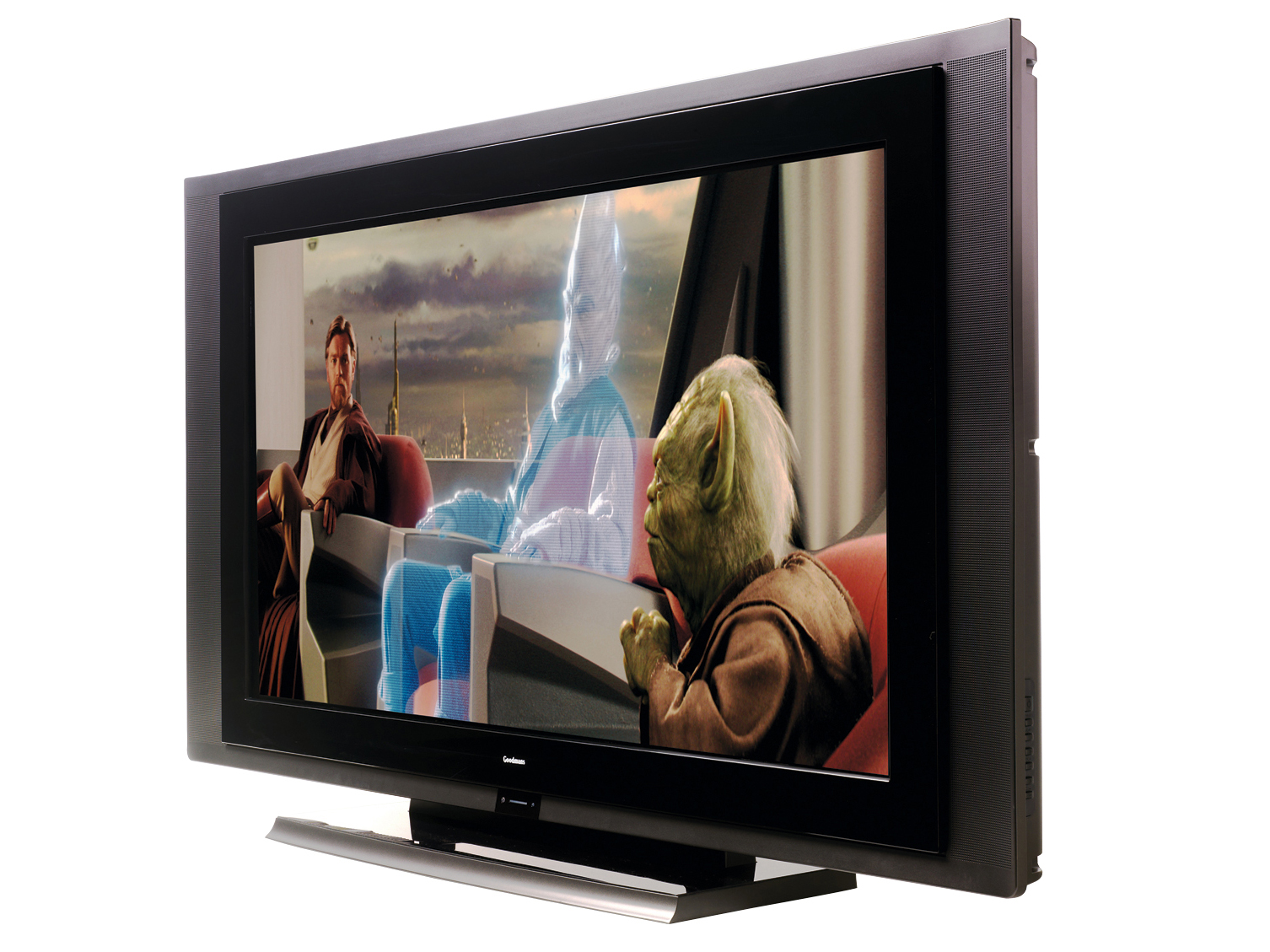TechRadar Verdict
Far better hi-def pictures than expected for so little money
Pros
- +
Excellent high-def performance
Superb price
Cons
- -
Standard-def pictures aren't great
Audio lacks bass
Limited viewing angle
Why you can trust TechRadar
In a move likely to send shivers down the spines of the UK's mainstream brands, dedicated budget brand Goodmans has entered the big-screen LCD fray with its largest LCD effort to date: the 42-inch LD4260HDFVT. And in time-honoured Goodmans tradition this new set is exceptionally aggressively priced at just £900.
Aesthetically the finish of the outer, greyish black part of the LD4260HDFVT's screen frame looks clumsy and plasticky. But the design is just about saved by a glossy inner screen frame and a presentable desktop stand.
Connectivity disappoints a little by only providing one HDMI, rather than the two we're becoming accustomed to finding. But there is at least solid support from the usual Scart, component video, composite video, and PC VGA selections.
Predictably features are in short supply - but that's not to say there aren't any. For starters, the set carries a digital tuner together with support for a seven-day electronic programme guide and programme reminder settings.
Also, the onscreen menus play host to such niceties as a noise reduction option, an optional 3D comb filter, and a film mode for improved motion while watching DVDs.
Unleashed on the Sky HD broadcast of Star Wars Episode III - The Revenge of the Sith, the LD4260HD's pictures are a lot better than we've come to expect from this budget brand.
Cheap darkness
Probably the biggest surprise concerns the set's black levels. For while dark scenes such as those in Darth Vader's resurrection room can look a little hollow thanks to a lack of shadow detail, the inkiness of space that provides a backdrop to the opening space battle doesn't look nearly as greyed over and flat as on many budget LCD rivals. This helps give the scene an epic sense of scale.
The space battles also surprise by suffering less with smearing than we'd expected, and benefiting from levels of detailing and sharpness that shame some sets costing hundreds of pounds more.
Finishing off a really credible picture mix is the LD4260HDFVT's colour response, which is vibrant for the lasers and ship markings of the space battle, but subtle and believable for the skin tones of Annakin and Obi-Wan as they search for Chancellor Palpatine on the enemy cruiser.
However, don't imagine this is a shoe-in purchase. After all, spending more money wisely could certainly get you deeper, more detailed black levels. Also, the LD4260HDFVT's standard-def performance is much weaker than its hi-def one, leaving a picture that's distinctly soft and a little inconsistent in its colourings. And so while the LD4260HDFVT scores well for its hi-def performance, that mark drops for standard-def, giving us a problem when it comes to giving it a mark for pictures.
Also in the negative column, the set's viewing angle isn't great, and its audio lacks any real sense of bass and can sound harsh when the going gets tough.
A true bargain
You can hardly expect perfection for £900. All that matters with the LD4260HDFVT is that it comfortably outperforms its price point, especially if you have a hi-def source to feed it. And if that isn't the definition of a TV bargain, we don't know what is.
Tech.co.uk was the former name of TechRadar.com. Its staff were at the forefront of the digital publishing revolution, and spearheaded the move to bring consumer technology journalism to its natural home – online. Many of the current TechRadar staff started life a Tech.co.uk staff writer, covering everything from the emerging smartphone market to the evolving market of personal computers. Think of it as the building blocks of the TechRadar you love today.
